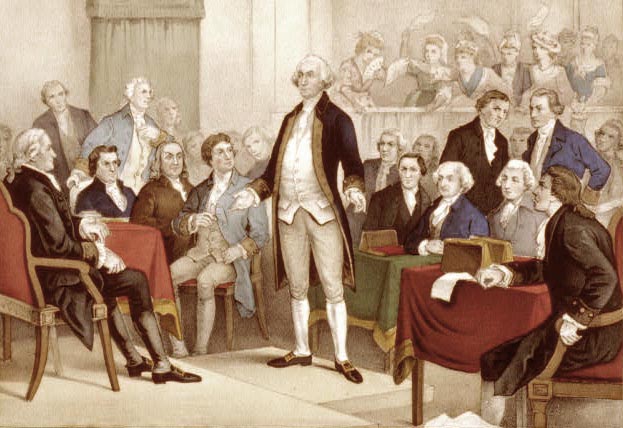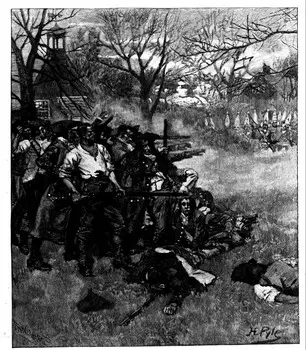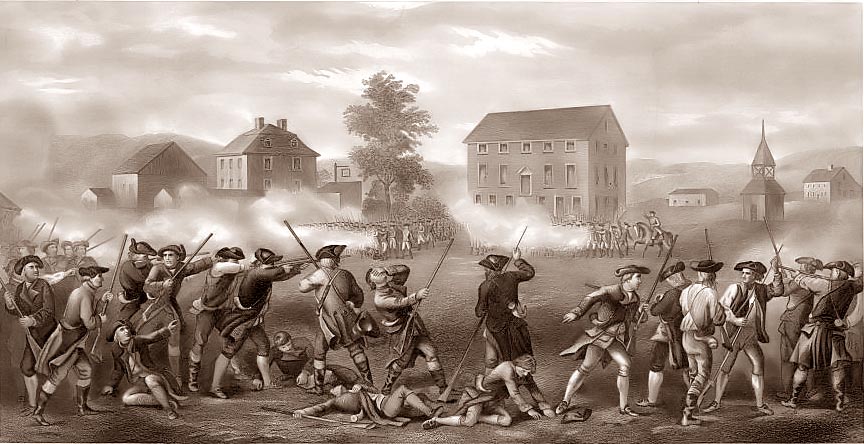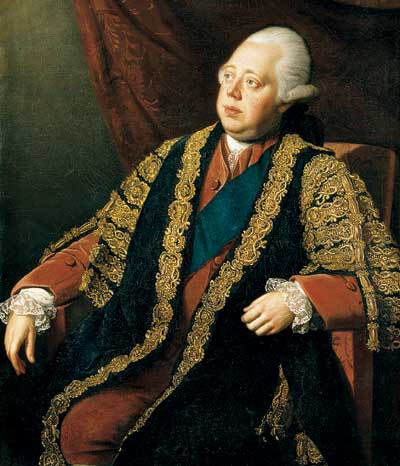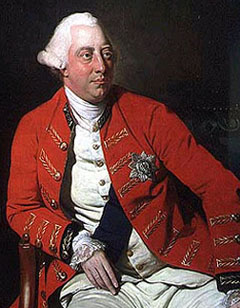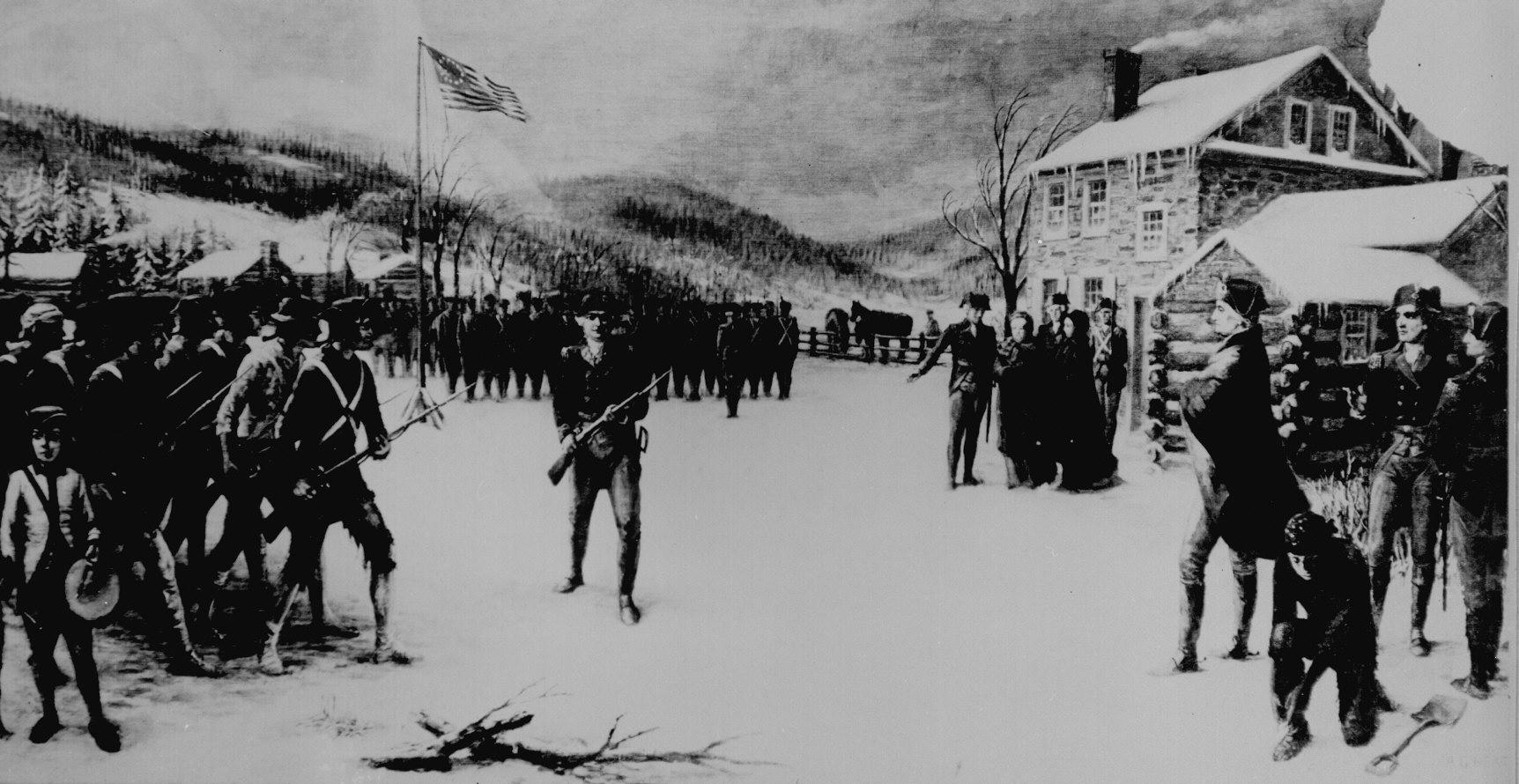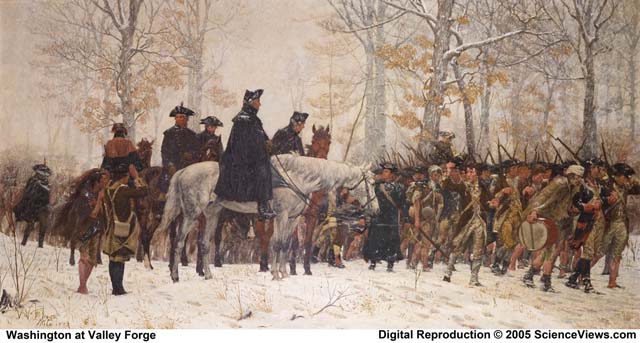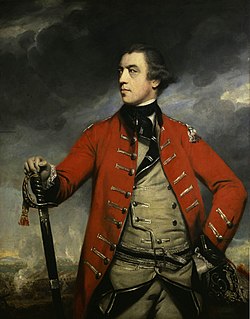Philadelphia was the headquarters for the Americans during the Revolutionary War. It hosted the First and Second Continental Congress'. General Howe attacked George Washington's forces in Philadelphia on September 26, 1777.
Without any problems, British forces had taken over Philadelphia. The colonists carried out all supplies from the city. General Howe awaited supplies. It took two months before the supplies got close. However, during this time General Burgoyne was defeated at Saratoga. With the French on the American side, General Howe fled Philadelphia and headed for New York.
The British had gained control of Philadelphia and lost it without a shot ever being fired. This historic city played a huge part in the Revolutionary War for the colonists.
Saturday, September 24, 2011
Philadelphia - Liberty Bell
Liberty Bell - The Liberty Bell was carried out of the city when any attacks happened, to prevent damage to it by British troops.
Philadelphia - Declaration of Independence
Declaration of Independence - The Declaration of Independence was signed in Philadelphia during the Second Continental Congress.
The Battle of Trenton
General Washington led his troops across the Delaware River the night of December 25, 1776. He was planning to lead a surprise attack on the Hessians stationed in Trenton. After landing on the other side of the Delaware River, the soldiers made their way to Trenton and found the Hessians sleeping and unprepared. General Rahl, the leader of the Hessian's at Trenton, ignored a message the previous day of a possible American attack.
The Hessians were completely surprised and tried to regroup inside the town. However, constant artillery fire and attacking soldiers from all directions led to the surrender of General Rahl, who was fatally wounded. The Americans suffered only four wounded. The Hessians suffered 20 killed, about 100 wounded, and over 900 captured. This was a great victory for the Americans, both physically and psychologically. This was a much needed morale booster for the Americans.
The Hessians were completely surprised and tried to regroup inside the town. However, constant artillery fire and attacking soldiers from all directions led to the surrender of General Rahl, who was fatally wounded. The Americans suffered only four wounded. The Hessians suffered 20 killed, about 100 wounded, and over 900 captured. This was a great victory for the Americans, both physically and psychologically. This was a much needed morale booster for the Americans.
The Treaty of Paris
Representatives from both sides of the war met in Paris to come to an agreement. In the Hotel d'York in Paris, France the Treaty of Paris was signed. On September 3, 1783, the treaty was signed by Benjamin Franklin, John Adams, John Jay, and David Hartley.
The key points of the treaty were as follows:
After being signed, the treaty was ratified by all parties on January 14, 1784. The Treaty of Paris ended the Revolutionary War, and gave freedom to the American citizens.
The key points of the treaty were as follows:
- Acknowledging the Thirteen Colonies to be free, sovereign and independent States, and that the British Crown and all heirs and successors relinquish claims to the Government, propriety, and territorial rights of the same, and every part thereof;
- Establishing the boundaries between the United States and British North America (for an account of two strange anomalies resulting from this part of the Treaty, based on inaccuracies in the Mitchell Map—see Northwest Angle and the Republic of Indian Stream);
- Granting fishing rights to United States fishermen in the Grand Banks, off the coast of Newfoundland and in the Gulf of Saint Lawrence;
- Recognizing the lawful contracted debts to be paid to creditors on either side;
- The Congress of the Confederation will "earnestly recommend" to state legislatures to recognize the rightful owners of all confiscated lands "provide for the restitution of all estates, rights, and properties, which have been confiscated belonging to real British subjects [Loyalists]";
- United States will prevent future confiscations of the property of Loyalists;
- Prisoners of war on both sides are to be released and all property left by the British army in the United States unmolested (including slaves);
- Great Britain and the United States were each to be given perpetual access to the Mississippi River;
- Territories captured by Americans subsequent to treaty will be returned without compensation;
- Ratification of the treaty was to occur within six months from the signing by the contracting parties.
After being signed, the treaty was ratified by all parties on January 14, 1784. The Treaty of Paris ended the Revolutionary War, and gave freedom to the American citizens.
Paris - American Signers
Signers of the Treaty of Paris - The signers on the American side were Benjamin Franklin, John Adams, and John Jay.
The Battles of Concord and Lexington
British General Gage ordered a march on Concord to seize the stockpile of arms and ammunition the colonists kept there. On April 19, 1775, after learning of the British march, a group of militiamen quickly formed in Lexington to hold off the British attack. The British advanced on the men and a shot was fired. After the smoke cleared, the British suffered only one wounded. Eight Minutemen died under Captain Parker.
The British continued on toward Concord. They secured the roads leading into the town and started destroying the weapons. Parker's Minutemen arrived at Lexington and saw the smoke. They attacked the British, killing many men. The British then retreated and marched back to Boston.
The British continued on toward Concord. They secured the roads leading into the town and started destroying the weapons. Parker's Minutemen arrived at Lexington and saw the smoke. They attacked the British, killing many men. The British then retreated and marched back to Boston.
New York
During the Revolutionary War, New York was controlled by the British. It was a great piece of property to have control of. The ports, the location, and the countless Loyalists located here were large advantages for the British. Several attempts were made by the Continental Army to gain control of this area, but none of them came close.
The strategy of using New York as a base was actually somewhat beneficial to the colonists. King George III concentrated on holding that position so much that many of the British resources were kept there. This meant there would be less troops for the colonists to fight against in other critical battles of the war.
The strategy of using New York as a base was actually somewhat beneficial to the colonists. King George III concentrated on holding that position so much that many of the British resources were kept there. This meant there would be less troops for the colonists to fight against in other critical battles of the war.
New York - British Fleet
British Fleet - In the water surrounding New York, the British kept many men and ships to maintain the holding of New York for the British.
New York - Battle of Long Island
Battle of Long Island - The British had control of New York. George Washington led troops to Long Island to attack the British. However, he didn't stand a chance against the massive fleet of British ships.
New York - British soldiers
New York City - British soldiers disembarking in New York. New York remained in control of the British during the Revolutionary War.
London, England
The headquarters for the British was located at London, England. King George III was the king of Great Britain. His decisions and ways of governing made the colonists in America despise him. Under him was Prime Minister Lord North. Lord North was head in command to the troops and had a large say in Parliament.
These two men made the colonists want independence. They knew they were outnumbered but felt they had no choice but to fight. North and King George III refused to give the colonists representation in Parliament, and continued to tax them. Lord North didn't think the colonists stood a chance. After all, his navy was the strongest in the World.
This train of thought eventually led to the independence of the colonists. They continued fighting in what they believed. King George III and Lord North were defeated, and are now remembered for their poor decisions that caused the American Revolution.
These two men made the colonists want independence. They knew they were outnumbered but felt they had no choice but to fight. North and King George III refused to give the colonists representation in Parliament, and continued to tax them. Lord North didn't think the colonists stood a chance. After all, his navy was the strongest in the World.
This train of thought eventually led to the independence of the colonists. They continued fighting in what they believed. King George III and Lord North were defeated, and are now remembered for their poor decisions that caused the American Revolution.
London, England - Lord North
Lord North - He was the Prime Minister of Great Britain, and was the one who gave most of the orders to the British troops.
The Siege of Yorktown
In 1781, British general Lord Charles Cornwallis brought his army to Yorktown, Virginia to establish a navy base. In that same year, Continental Army general, George Washington, attacked the port. Comtes de Rochambeau led his French troops to assist George Washington in the taking of the base. Comte de Grasse aided Washington and Rochembeau with a fleet of ships to block Cornwallis' retreat in the Chesapeake Bay.
From the sea, Grasse bombarded the British defenses with his ships. This weakened them, and allowed Washington, on October 14, 1781, to send to columns to attack the remaining British outer defenses. Outnumbered, and surrounded by enemy forces, Cornwallis had no choice but to surrender. The Siege of Yorktown was a key victory for the Americans. It also proved that our French allies were valuable to our war efforts.
From the sea, Grasse bombarded the British defenses with his ships. This weakened them, and allowed Washington, on October 14, 1781, to send to columns to attack the remaining British outer defenses. Outnumbered, and surrounded by enemy forces, Cornwallis had no choice but to surrender. The Siege of Yorktown was a key victory for the Americans. It also proved that our French allies were valuable to our war efforts.
Yorktown - Comtes de Rochambeau
Comtes de Rochambeau - French general who led French troops to assist George Washington in seiging Yorktown.
Yorktown - Lord Charles Cornwallis
Lord Charles Cornwallis - Leading British General who was attacked by George Washington at Yorktown.
The Winter of Valley Forge
The winter of 1777-1778 was a bad one. The Continental Army camped out for the winter at Valley Forge. No battle was fought here but thousands of soldiers died because of hunger and disease. Many also lost their lives due to the unrelenting weather they faced. The Winter of Valley Forge is the story of an army's struggle to survive and continue fighting the next year.
General Washington set out looking for a place for his soldiers to encamp for the winter. He chose valley forge because of its location, close enough to prevent attacks and far enough away from the British to see any surprise attacks. It was also very easy to defend because of the high ground and the Schuylkill River to the north.
Upon arrival in Valley Forge, Washington's men began building huts for shelter and defensive lines. Clothing and food was scarce and many men and animals died because of starvation. Disease also spread rampant through the camp because of malnutrition and close living quarters.
Supplies weren't the only thing running low. Morale and discipline were needed and the troops drilled whenever possible. Baron von Steuben had the task of turning the army into a true fighting force. The army trained daily and became confident in their ability to succeed.
During the winter, the army underwent an amazing transformation. The troops were more sufficiently trained, better supplied, and reinforced by new troops. After the winter was over, the Continental Army was yet again ready to fight.
General Washington set out looking for a place for his soldiers to encamp for the winter. He chose valley forge because of its location, close enough to prevent attacks and far enough away from the British to see any surprise attacks. It was also very easy to defend because of the high ground and the Schuylkill River to the north.
Upon arrival in Valley Forge, Washington's men began building huts for shelter and defensive lines. Clothing and food was scarce and many men and animals died because of starvation. Disease also spread rampant through the camp because of malnutrition and close living quarters.
Supplies weren't the only thing running low. Morale and discipline were needed and the troops drilled whenever possible. Baron von Steuben had the task of turning the army into a true fighting force. The army trained daily and became confident in their ability to succeed.
During the winter, the army underwent an amazing transformation. The troops were more sufficiently trained, better supplied, and reinforced by new troops. After the winter was over, the Continental Army was yet again ready to fight.
Valley Forge - Suffering
Valley Forge - This painting shows the suffering of the Continental Army during the Winter at Valley Forge
The Battle of Bunker Hill
On June 17, 1775, British forces attacked the colonists at the Battle of Bunker Hill. Bunker Hill was the initial objective for both sides, however, much of the batlle ended up taking places adjacently at Breed's Hill. William Prescott was the leader of the colonial troops. The British constantly outnumbered to colonists throughout the batlle. The original plan for the British was to flank the South end and surround the hill. However, the colonial forces did their job. They held off two surges of British troops. Prescott ordered reinforcements. Knowing they had many more people at their disposal, the British Army decided to attack straight up the hill. This plan worked, and the colonists were forced out of the area. However, the British lost many people in the battle. This would help the Continental Army in the long run.
The Battle of Saratoga
Saratoga, located near Albany, New York, was a desired position to reach by British generals. The British Army sent three separate units to meet at Albany. They intended to arrive at the same time and surround the Continental Army at different angles. All three units being there at the same time would also give the British an advantage in numbers.
The first unit was located in New York, and was led by General Howe. This group could advance up the Hudson River to meet Burgoyne. Being closer to Albany than the other troops, he decided to go off course. He went to Philadelphia, Pennsylvania to lead an attack on the rebel capital. He occupied the capital and left Burgoyne to go through the wilderness of New York.
One of the other two groups was to come in by way of Lake Ontario. This small army was led by Colonel St. Leger. They would be capable of assiting the other British force if need be. Their journey was interrupted when they met rebel forces at Fort Stanwix. The Continental Army prevailed and held up the British troops. After finally moving on, St. Leger's troops met opposition at Oriskany. This made it impossible for him to arrive at Saratoga on time.
The first two groups were in obvious delays. General Burgoyne was ahead of the final group of soldiers. After being the furthest away, he also took much time bringing of all his items. He brought in wagons furniture, clothes, and other personal goods. He came down the Lake Champlain route from Canada. After arriving at Saratoga, Burgoyne recieved letters from each of the other commanders, stating they would not be able to meet him to fight.
The Battle of Saratoga occurred on September 19 and October 7, 1777. Unable to advance or retreat, Burgoyne was forced to sureender his entire force to the Continental Army general, Horatio Gates.
The first unit was located in New York, and was led by General Howe. This group could advance up the Hudson River to meet Burgoyne. Being closer to Albany than the other troops, he decided to go off course. He went to Philadelphia, Pennsylvania to lead an attack on the rebel capital. He occupied the capital and left Burgoyne to go through the wilderness of New York.
One of the other two groups was to come in by way of Lake Ontario. This small army was led by Colonel St. Leger. They would be capable of assiting the other British force if need be. Their journey was interrupted when they met rebel forces at Fort Stanwix. The Continental Army prevailed and held up the British troops. After finally moving on, St. Leger's troops met opposition at Oriskany. This made it impossible for him to arrive at Saratoga on time.
The first two groups were in obvious delays. General Burgoyne was ahead of the final group of soldiers. After being the furthest away, he also took much time bringing of all his items. He brought in wagons furniture, clothes, and other personal goods. He came down the Lake Champlain route from Canada. After arriving at Saratoga, Burgoyne recieved letters from each of the other commanders, stating they would not be able to meet him to fight.
The Battle of Saratoga occurred on September 19 and October 7, 1777. Unable to advance or retreat, Burgoyne was forced to sureender his entire force to the Continental Army general, Horatio Gates.
Subscribe to:
Posts (Atom)


